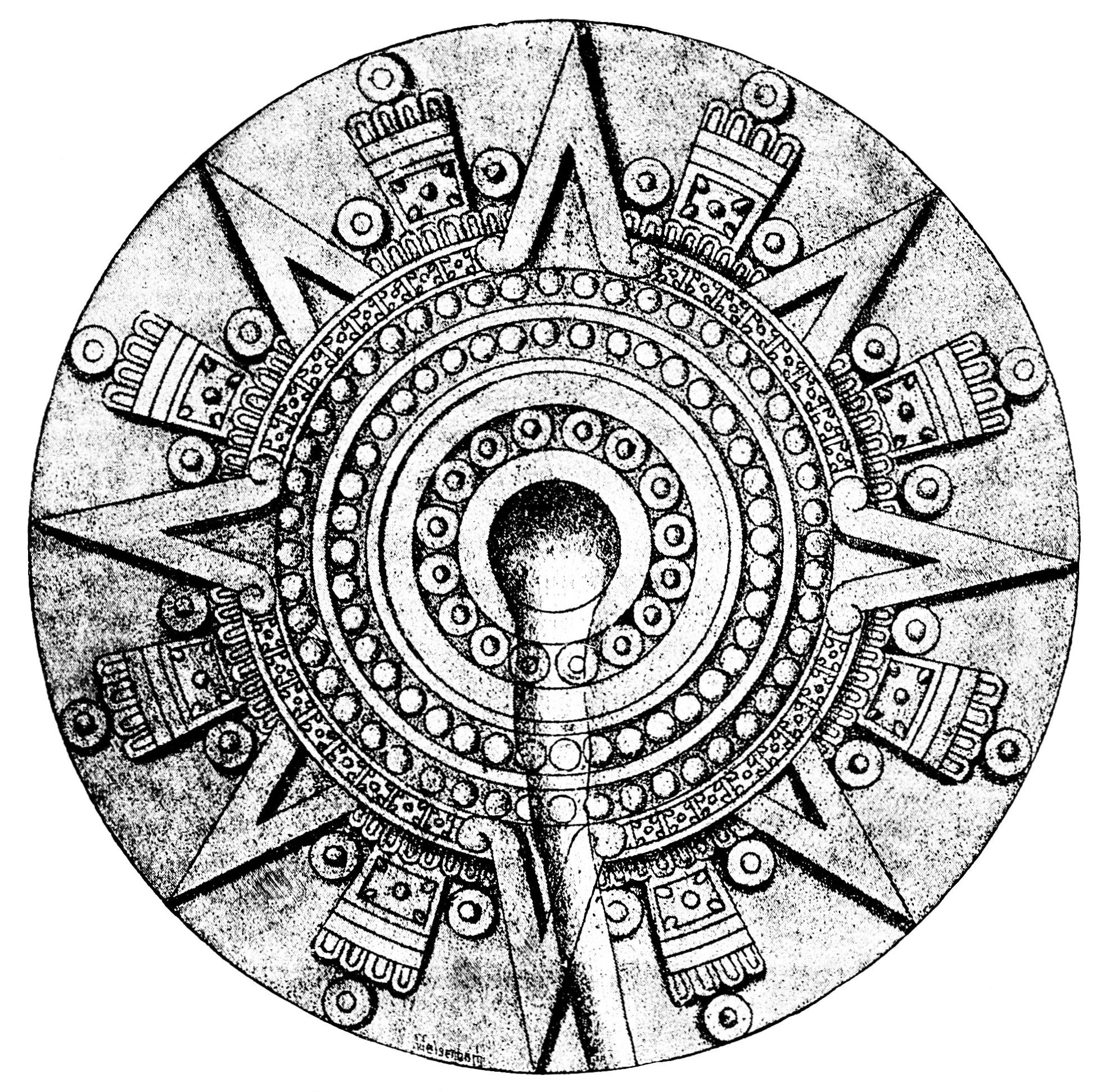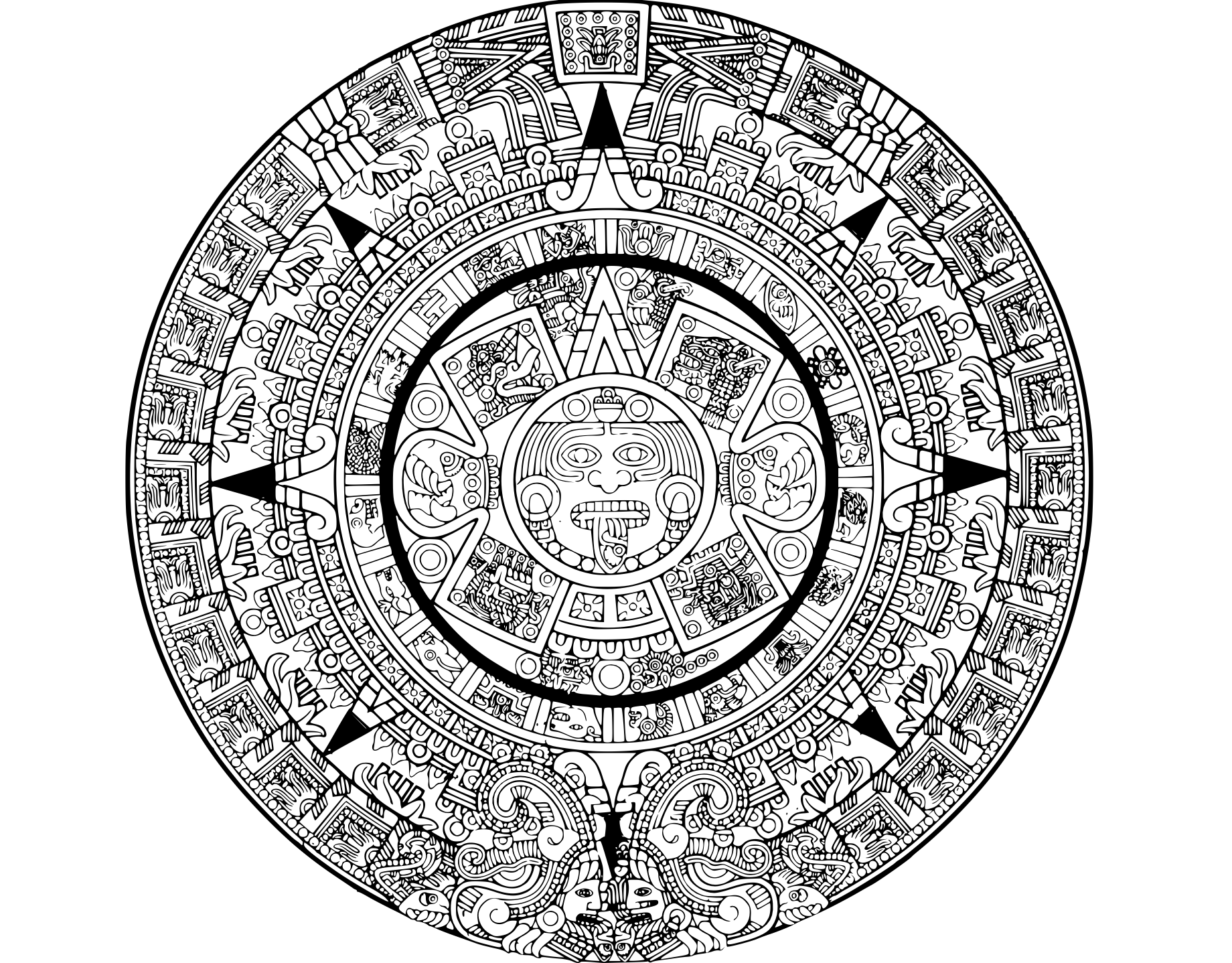|
Temalacatl
A temalacatl was a gladiatorial platform believed to have been used by the different civilizations of Mesoamerica, consisting of a large stone disc with a handle in the center where the prisoner was tied for further gladiatorial combat. History Monoliths created by the Aztecs assumed to be temalacatl include the Stone of Tizoc and the Stone of Motecuhzoma I, the latter being the larger of the two. There is debate over whether temalacatls were only combat sites or if these stones were also used as sacrificial receptacles where the extracted heart of the victim was deposited in a similar manner as a great cuauhxicalli. However, recent studies show that temalacatl were not used for the slaughter of prisoners, but were fighting platforms and monuments to the Mexica conquests. Some researchers suggest the Aztec sun stone could also be a temalacatl. References {{Mesoamerica-stub Aztec artifacts ... [...More Info...] [...Related Items...] OR: [Wikipedia] [Google] [Baidu] |
Stone Of Motecuhzoma I
The Stone of Motecuhzoma I is a pre-Columbian stone monolith dating back to the rule of Motecuhzoma I (1440-1469), the fifth Tlatoani (ruler) of Tenochtitlan. The monolith measures approximately 12 feet in diameter and 39 inches tall, and is also known as the Stone of Motecuhzoma Ilhuicamina, the Cuauhxicalli of Motecuhzoma Ilhuicamina, the Archbishop's Stone, the Ex-Arzobispado Stone, and the Sánchez-Nava Monolith. Historical sources refer to it simply as "temalacatl," literally meaning "round stone." Motecuhzoma I, also known as Motecuhzoma Ilhuicamina, was the grandson of the first Tlaltoani of Tenochtitlan, succeeding Itzcoatl, and he turned the position of King into an imperial one. He is credited with the expansion and consolidation of the Aztec Empire (though he is often mistaken for his popular descendant Motecuhzoma II, who ruled during the Spanish conquest nearly a century later). In Nahuatl, Motecuhzoma means "He Becomes Angry Like a Lord," and Ilhuicamina means "He S ... [...More Info...] [...Related Items...] OR: [Wikipedia] [Google] [Baidu] |
Stone Of Tizoc
The Stone of Tizoc, Tizoc Stone or Sacrificial Stone is a large, round, carved Aztec stone. Because of a shallow, round depression carved in the center of the top surface, it may have been a '' cuauhxicalli'' or possibly a '' temalacatl''. Richard Townsend maintains, however, that the depression was made in the 16th century for unknown purposes. The stone was rediscovered on 17 December 1791 when the Zócalo, the heart of downtown Mexico City, was being repaved. Workmen had been cutting cobblestone, and were about to cut up the carved monolith. A churchman named Gamboa happened to be passing by and saved the stone from the same result. The stone was then moved to the nearby Cathedral, and propped up vertically on one of the building's towers, where it stayed until 1824, when it was moved to the University. The stone is currently in the National Museum of Anthropology in Mexico City. The monolith is made of basalt and measures 93 cm tall with a diameter of 2.65 meters and a ... [...More Info...] [...Related Items...] OR: [Wikipedia] [Google] [Baidu] |
Aztec Sun Stone
The Aztec sun stone () is a late post-classic Mexica sculpture housed in the National Anthropology Museum in Mexico City, and is perhaps the most famous work of Mexica sculpture. It measures in diameter and thick, and weighs . Shortly after the Spanish conquest, the monolithic sculpture was buried in the Zócalo, the main square of Mexico City. It was rediscovered on 17 December 1790 during repairs on the Mexico City Cathedral. Following its rediscovery, the sun stone was mounted on an exterior wall of the cathedral, where it remained until 1885.Getty Museum, "Aztec Calendar Stone" ''getty.edu'', accessed 22 August 2018 Early scholars initially thought that the stone was carved in the 1470s, though modern research suggests that it was carved some ... [...More Info...] [...Related Items...] OR: [Wikipedia] [Google] [Baidu] |
Cuauhxicalli
A ''cuauhxicalli'' or ''quauhxicalli'' (, meaning "eagle gourd bowl") was an altar-like stone vessel used by the Aztec in sacrificial ceremonies, believed to be for holding human hearts. A cuauhxicalli would often be decorated with animal motifs, commonly eagles or jaguars. Another kind of cuauhxicalli is the Chacmool-type, which is shaped as a reclining person holding a bowl on his belly. Gallery File:20041229-Ocelotl-Cuauhxicalli (Museo Nacional de Antropología) MQ.jpg, Jaguar-shaped cuauhxicalli in the National Museum of Anthropology of Mexico File:Mighty carved stone eagle.jpg, Cuauhxicalli in the shape of an eagle, from the Templo Mayor The (English: Main Temple) was the main temple of the Mexica people in their capital city of Tenochtitlan, Tenōchtitlan, which is now Mexico City. Its architectural style belongs to the late Mesoamerican chronology, Postclassic period of Me ... File:Cuauhxicalli, National Anthropology Museum, Mexico City.webm, Video of a cuauhxica ... [...More Info...] [...Related Items...] OR: [Wikipedia] [Google] [Baidu] |
Fondo De Cultura Económica
Fondo de Cultura Económica (FCE or simply "Fondo") is a Spanish language, non-profit publishing group, partly funded by the Mexican government. It is based in Mexico but it has subsidiaries throughout the Spanish-speaking world. It was founded in 1934 by Daniel Cosío Villegas with the original purpose of providing students of economics from the Escuela Nacional de Economía with specialized books in Spanish. Soon, it expanded its interests to other subjects: humanities, literature (mostly works written in Spanish), popular science, children's books and literature for young adults. FCE's backlist encompasses more than ten thousand volumes, approximately 5,000 of which are still in print, and it has an electronic catalog of more than 1,300 titles. FCE has published the books of 65 authors who were awarded with the Nobel Prize; 33 authors awarded with the Miguel de Cervantes Prize, 29 authors honored by the Princess of Asturias Awards, and over 140 authors who were awarded the M ... [...More Info...] [...Related Items...] OR: [Wikipedia] [Google] [Baidu] |

